In an exclusive conversation with CXO News & APAC News Network, Sunil Sharma, Vice President, Sales, Sophos India & SAARC explains Sophos differentiators in the highly competitive cybersecurity landscape and advises CISOs to turn to integrated and automated security solutions
What are the products and services currently in the Sophos portfolio in India?
The threat landscape is more complex and challenging today than ever before. Cyber threats are evolving rapidly, with sophisticated tactics and technologies that can target any organization, regardless of size or industry. At Sophos, we recognize these challenges and are committed to providing comprehensive cybersecurity solutions that address the entire spectrum of modern threats.
The Sophos Adaptive Cybersecurity Ecosystem integrates Sophos’ extensive portfolio of products, services, and Sophos X-Ops threat intelligence for faster and more contextual protection, detection, and response. It is easily managed in the cloud-native Sophos Central platform alongside all other Sophos solutions which include:
Sophos Intercept X Endpoint protects more than 300,000 organizations against advanced attacks, offering multiple layers of security for unparalleled protection against known and unknown malware, ransomware, and exploits. Industry-first adaptive defenses provide an automated step-up in protection in response to active adversaries, stopping in-progress attacks and providing defenders with valuable additional time to respond. Sophos Endpoint’s CryptoGuard technology provides the most robust zero-touch endpoint defense against both local and remote ransomware attacks, including new variants.
Sophos Firewall delivers unrivaled performance and advanced protection against ransomware and other cyber threats. It integrates seamlessly with our endpoint solutions to defend against today’s innovative and persistent adversaries who are consistently devising new techniques. Recently introduced XGS 7500 and 8500 models meet the needs of the largest enterprises and campus deployments with industry-best modular connectivity; highly scalable SD-WAN features; trusted traffic and application acceleration; high-performance Transport Layer Security (TLS) inspection; enterprise-grade, high-availability, and redundancy capabilities; and more.
Sophos Email Security protects organizations from email-borne threats, including phishing, malware, and spam, while also offering encryption and data loss prevention to safeguard sensitive communications. Sophos Phish Threat offers security awareness training and phishing simulation to help organizations educate their employees on recognizing and responding to phishing attacks
Sophos Mobile provides comprehensive mobile device management (MDM) and security to protect against mobile threats and ensure compliance across iOS, Android, and Windows devices. Sophos Central Device Encryption ensures that sensitive data is protected across devices and platforms through robust encryption and preventing unauthorized access.
Sophos Cloud Optix, our AI-powered security and compliance solution for public cloud environments like AWS, Azure, and Google Cloud, ensures that organizations can leverage the cloud securely and confidently.
Sophos Central, our unified management platform allows IT teams to manage all Sophos products from a single interface, streamlining operations and enhancing threat response capabilities.
Many organizations do not have the in-house expertise to deploy, monitor, and manage the solutions required to defend against persistent attackers. This is why we offer Sophos Managed Detection and Response (MDR)services so that every business regardless of size and resources can have human-led threat hunting providing 24/7 active defenses to keep their businesses safe.
How is Sophos leveraging AI/ML to gather and analyze real-time data on emerging threats?
In today’s dynamic cyber threat landscape, leveraging Artificial Intelligence (AI) and Machine Learning (ML) is essential for effective cybersecurity. By integrating AI and ML into our security infrastructure, we can process and analyze enormous amounts of data with remarkable speed and accuracy. Leveraging AI/ML helps Sophos solutions in advanced threat detection and prevention, real-time data analysis, behavioral analysis, and enhanced threat intelligence.
AI and ML algorithms help us detect and prevent threats more accurately by analyzing vast datasets of known and unknown threats. These technologies can identify patterns and anomalies that traditional methods might miss, allowing us to stop sophisticated attacks like zero-day exploits and advanced persistent threats. We continuously analyze real-time data from millions of sources, including files, URLs, and network traffic, using machine learning models. This ongoing analysis helps us quickly identify and respond to new and evolving threats, keeping our protection mechanisms updated.
How does Sophos today differentiate itself in the highly competitive cybersecurity solution provider landscape?
In the highly competitive cybersecurity landscape, Sophos stands out by focusing on several key differentiators that provide exceptional value to our customers:
Comprehensive security portfolio: Our broad portfolio of cybersecurity solutions covers endpoints, networks, email, cloud environments, and mobile devices. This comprehensive coverage ensures that our customers have complete protection across all aspects of their IT infrastructure, reducing gaps and vulnerabilities.
Ease of management: We offer a unified management platform that provides centralized control over all our solutions. This platform simplifies administration, reduces complexity, and enhances visibility across the entire security environment, allowing IT teams to manage and respond to threats more efficiently.
Integrated approach: One of our primary differentiators is our synchronized security approach. Our solutions work together in real time, sharing threat intelligence across the network, endpoints, and cloud environments. This integrated approach ensures that threats are detected and mitigated faster and more effectively than siloed solutions, providing a cohesive defense strategy.
24/7 managed detection and response: Our Managed Detection and Response service provides round-the-clock threat hunting, detection, and response. Customers benefit from continuous monitoring and immediate response to incidents, reducing the burden on their internal teams.
Global reach with local expertise: While we have a global presence, we also emphasize local expertise. In regions like India, we understand the unique challenges and requirements faced by businesses. Our local teams work closely with customers to tailor solutions that meet their specific needs, backed by the resources and support of a global organization.
What are the challenges CISOs are facing today in terms of information overload as well as siloed and distributed data?
Today, Chief Information Security Officers (CISOs) are navigating an increasingly complex and challenging landscape.
CISOs are inundated with massive volumes of data from various security tools and systems.
This includes logs, alerts, and incident reports, which can be overwhelming to manage and analyze. The sheer number of security alerts generated daily can lead to alert fatigue. With so much information to process, prioritizing threats and vulnerabilities is challenging. CISOs must determine which issues require immediate attention and which can be addressed later, balancing resources and risk effectively.
To make the situation even worse, with the rise of remote work and cloud computing, data is increasingly spread across various locations and platforms. Managing and securing data in such a distributed environment poses significant challenges in terms of visibility and control.
There is a global shortage of skilled cybersecurity professionals. CISOs often struggle to build and retain teams with the necessary expertise to handle the growing and evolving threats.
To address these challenges, CISOs are increasingly turning to integrated and automated security solutions that provide unified visibility and control. By leveraging advanced technologies like Artificial Intelligence (AI) and Machine Learning (ML), they can better manage information overload, correlate data from various sources, and respond to threats more effectively.
Additionally, adopting a holistic and synchronized approach helps break down silos, ensuring that all parts of the security infrastructure work together seamlessly to protect the organization.
Rajneesh De, APAC News Network
























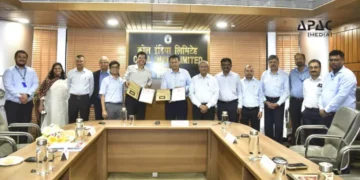


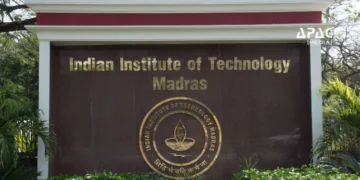



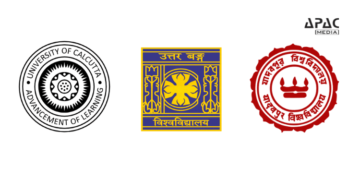

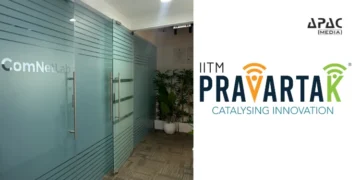






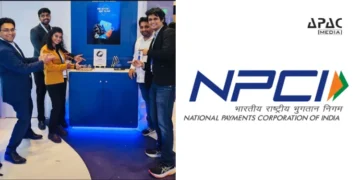
























Discussion about this post